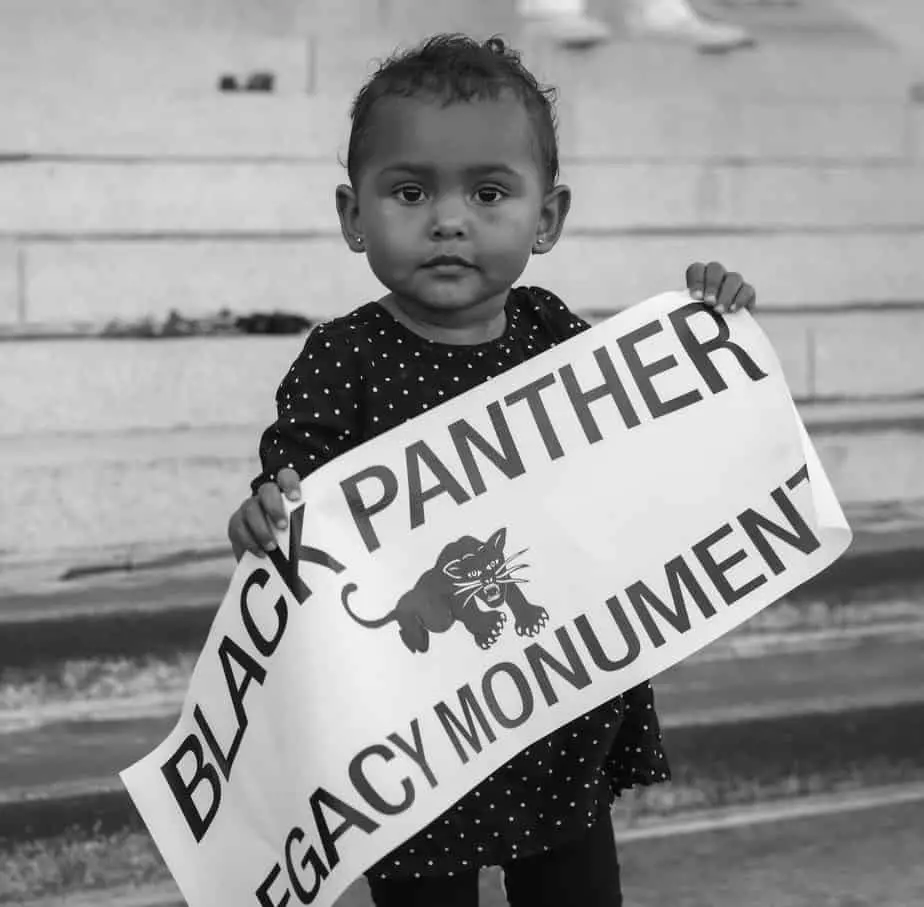I was not taught about the Black Panther Party at school. This was something I heard by word of mouth. Something I heard in an Afrocentric household, in a smoky room during a conversation between grown folks. Things I overheard while eavesdropping or discussed at dinner tables. Between a game of cards I would hear, “You know damn well this shit wouldn’t be going down if the Panthers were still around,” or “Back in the day, we stood for something. The Black Panthers were all about coming together to solve problems!” This is why the discovery of a revolutionary, Black led political organization called “The Black Panthers for self-defense” was mind blowing growing up. My aunts and uncles would wax poetic about being a member and marching alongside the Panthers, giving you an unbridled sense of pride. Still, there are many misconceptions about the Panthers that are largely untrue. They were seen as thugs, violent terrorists or just plain un-American. These were not the notions that I was taught at all. I heard stories of “programs” where kids were being fed breakfast before school, free clinics, with bus transportation, assisting elders with errands. After reading there was a rally for a dedication monument on Juneteenth this year, I jumped at the opportunity. There was a specification on the flyer. It read “WEAR BLACK. BRING FLOWERS”. Dressed in black, I along with my teenage son and 2 year old daughter, made our way to the courthouse stairs. The rally began with Damien McDuffie of Wines and Bowties as moderator. He began speaking about how this monument was “an attempt at telling Black stories more fully and restoring the impact of our presence in the past”. The first of the four hosts was introduced to the stage, Sistah Iminah, an artist and cultural ambassador. She adorned herself with a sunflower headdress and face paint. While she made her way to the center of the stage, she seemed to channel the essence of the orisha Oshun—the Yoruba river goddess of fertility, and the nurturer of humanity. She began by inviting the crowd to join her in a call and response. She stood next to a large circle of flowers on the ground and looked up at the gathering in front of her. “Revolution is the only solution!” she sang. This energized the crowd and everyone joined in. A wave of nostalgia swept across the crowd and floated back up to the stage. Sistah Iminah said her thank you’s and proceeded to introduce the next group of presenters. “Being that the Panthers were a youth led movement, it’s only fitting that we let the youth speak,” On to the stage walked Shaylah Ellis, Dwayne Khyri Davis and Jessica Ramos. Recently there was an organized youth march to Libby Schaaf, the mayor of Oakland, residence and I was shocked to find out at that very moment, that they were the ones to organize that march. They spoke about the experience of making the trek from Fruitvale to Schaaf’s house to demand the defunding of the police. Shortly after, they introduced the president of the Dr. Huey P Newton foundation and Huey’s widow, Fredrika Newton. She began with “All power to the people”. She went on to stress the fact that “this is not a monument to an individual, it’s a monument not only to the legacy of the Party but a legacy to the community that the Party served and loved.” Sistah Iminah returned to close things out and finished with a “ceremony of water”, shifting water between bowls to symbolize the migration of the African Diaspora, which has been split from their source and flows across currents like water. Then we were all invited to place flowers in the huge flower circle. She ended with “In the spirit of Black liberation, black power, power to the people, freedom from oppression, AŚE AŚE AŚE! Black Power AŚE! The desired location of the monument is the triangular tract of land across from the Alameda Courthouse steps where Panthers regularly held rallies beginning with the “Free Huey” movement. As of now, the hope is to have a five million dollar monument erected by 2022. // Check https://hueypnewtonfoundation.org/ for updates. Photography by Marcell Turner.




